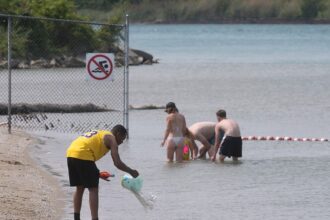The crystalline giants that have defined North America’s most majestic landscapes for millennia are vanishing at an unprecedented pace. New research released yesterday by the North American Glacial Monitoring Consortium reveals that glaciers across Canada and the northwestern United States are now melting at twice the rate observed just a decade ago, triggering alarm among climate scientists and water resource managers alike.
“We expected acceleration, but the magnitude has stunned even our most seasoned researchers,” explains Dr. Melissa Hernandez, lead glaciologist at the University of British Columbia and principal investigator for the study. “In regions like the Columbia Icefield, we’re witnessing annual ice loss of 3.2 meters in thickness—compared to 1.5 meters annually from 2010-2020.”
The comprehensive analysis, which employed satellite imagery, ground-penetrating radar, and direct field measurements across 137 major glaciers, paints a stark picture of Canada’s cryosphere in rapid decline. British Columbia’s coastal glaciers show the most dramatic changes, with volume reductions exceeding 27% since 2015.
What makes this acceleration particularly concerning is its implications for Canada’s water security. Glacial meltwater currently supplies drinking water to millions of Canadians and Americans, powers hydroelectric facilities across western provinces, and maintains critical summer flows in river systems that support agriculture and fisheries.
“This isn’t just an environmental story—it’s an economic one,” notes Warren Phillips, senior environmental economist with the Canadian Climate Institute. “When these natural reservoirs disappear, the downstream costs to infrastructure, energy production, and water treatment will run into billions annually.”
Indigenous communities in glacier-adjacent territories have been sounding warnings about these changes for years. Elaine Waskewitch, elder from the Ktunaxa Nation in southeastern British Columbia, describes how traditional knowledge predicted the current crisis: “Our stories speak of the ice beings retreating when balance is lost. What science now measures, our ancestors understood generations ago.”
The accelerated melting correlates directly with temperature anomalies across western North America, where average annual temperatures have increased by 2.3°C since pre-industrial times—significantly higher than the global average of 1.2°C. The latest climate models project that without immediate and substantial emissions reductions, up to 80% of western Canada’s glacier ice could disappear by 2050.
Federal Environment Minister Catherine McKinnon responded to the findings by announcing a $175 million glacier resilience fund aimed at monitoring programs and community adaptation planning. “These findings demand an urgent reassessment of our climate targets,” McKinnon stated during yesterday’s press conference in Ottawa. “The timeline for action has compressed dramatically.”
For communities like Banff and Jasper that depend on glacier-fed watersheds and glacier-viewing tourism, the economic implications are immediate. Tourism operators report visible changes affecting visitor experiences, with once-reliable glacier viewpoints now revealing bare rock and retreating ice margins.
Scientists emphasize that while the acceleration is alarming, meaningful emissions reductions could still preserve some of North America’s iconic ice. Dr. Hernandez points to models showing that limiting warming to 1.5°C could stabilize about 40% of current glacier volume—a dramatic improvement over business-as-usual scenarios.
The research underscores how Canada’s warming climate is transforming faster than global averages would suggest. As these frozen reservoirs convert to runoff, we face a critical question that extends beyond environmental concerns to the very foundation of western North America’s water security: Can our infrastructure, economic systems, and communities adapt quickly enough to a future where the reliable ice towers that have regulated our watersheds for thousands of years no longer perform that vital function?










